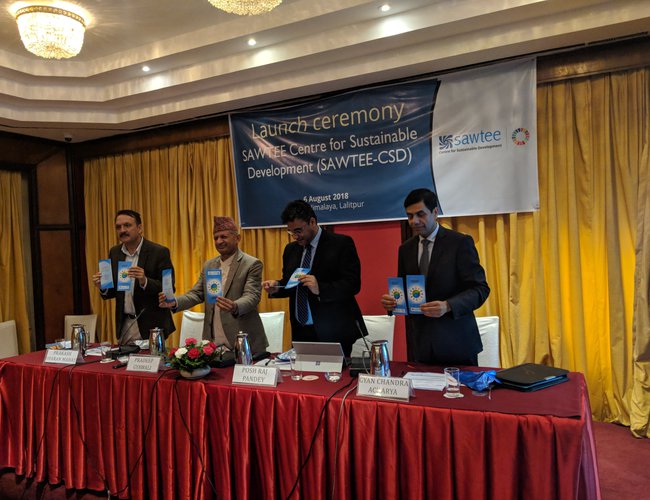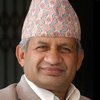
The SDGs represent the most comprehensive development agendas ever evolved through consensus of the world community. Adoption of this in 2015 reflected the resolve of humanity to fight poverty and extricate itself from the state of under-development.
This bears a special meaning to the least developed countries like Nepal. It has generated enormous hope in LDCs as this represents the most holistic development promise to them ever since the vulnerabilities and special needs of the group was recognized in 1971.
The SDGs build on the achievements of the Millennium Development Goals (MDGs) but encompass much more than that. For LDCs and LLDCs, SDGs represent the substantial addition to the MDGs, Istanbul Program of Action (IPOA), the Vienna Program of Action (VPOA), Addis Ababa Action Agenda and other internationally agreed development goals and targets.
While all the earlier efforts have made positive contributions in bringing shared understanding, shared commitment as well as visible improvement in the human condition, SDGs aim at leaving no one behind and taking forward everyone in this journey.
Through the implementation of cross-cutting 17 goals and 169 indicators, SDGs intend to culminate in ending poverty and hunger from the face of the world. This is ambitious but through our collective efforts it is achievable. We must start this journey from the local and national level.
Nepal remains committed to achieve these goals before 2030. Building on our experience and relative success in the implementation of MDGs, the Government of Nepal has fully internalized the SDGs into the national policies and plans. It is imperative now to mainstream and integrate them in the provincial and local level plans and programmes. We were the first country to prepare national plan of action for SDGs. Nepal participated in Voluntary National Review at the High Level Political Forum last year and we are preparing for the next year's review of the progress after 4 years of the SDGs' adoption.
Implementation of SDGs is critical for Nepal’s ambition of graduating from the LDC status. Progress in SDGs can contribute for smooth and sustainable graduation as we endeavour to raise our performance in income criteria.
After years of political transition, Nepal has now achieved political stability. The conflict had its toll in terms of a generation of youth flying from the country and remaining outside of the school. We invested our valuable time, enormous political capital, economic resources and that of people's resilience to conclude the peace process. This has established culture of dialogue and accommodation among the stakeholders within the country, which is manifested in the promulgation of a democratic and inclusive constitution in 2015. This has also raised people's expectation.
One of the biggest challenges of our time is ending poverty which is the overarching goal of the SDGs. The government intends to address this situation by aligning targeted programs with economic, social and environmental pillars of the SDGs. The recently pronounced policies and programs of the government and the federal budget for this fiscal year are aimed at fulfilling that objective and building foundation for making "Prosperous Nepal, Happy Nepali".
Nepal has abundant natural resources. We have potential to meet our energy needs and generate resources for other development purposes by tapping hydropower potential. Geographical proximity to India and China provides Nepal a unique opportunity to benefit from unprecedented economic transformation taking place there that opens up immense opportunities for trade and investment.
In order to realise SDGs, Nepal needs to attain higher productivity and economic growth. Promotion of innovation, entrepreneurship, manufacturing, and the small and medium-sized enterprises can play critical role in this process. Nepal also needs to focus on capacity building and infrastructure development.
As a least developed country, Nepal has to invest its limited resources with great prudence. Agriculture is the largest contributor in national GDP. Majority of our population lives in rural areas and depends on agriculture for livelihoods. However, for agriculture to be an attractive enterprise for younger generation, we need to modernise it, encourage commercial farming, and search market access for agro-products.
Progress on all of the SDGs will be stalled if women's empowerment is not put at the top of the agenda. Realization of gender equality hinges upon the full empowerment of women and girls. So is the importance of ensuring inclusion of marginalized communities and the Dalits in the mainstream of the development process and render social justice to all of our people. The Constitution of Nepal has guaranteed gender equality and equal rights for all. Investing in education is the call of our time. Providing technical and vocational training and creating job should be our priority. Quality and inclusive education has the capacity to bring positive social and economic transformation in the country. Our own experience of inclusiveness has proved this reality.
Our demography is young but lacks modern skills. Finding decent jobs for them at a time when the world is witnessing the fourth Industrial Revolution is a challenge for us. For over a decade, migration and by extension remittance has remained a major component of our economy. Nepal attaches great value in ensuring safe, orderly and regular migration. We have stressed on creating a fair and win-win situation for all, including the migrant workers. At domestic level, we are pursuing this matter in earnest and are committed to eradicate all forms of labour related issues by 2028.
The cost of natural disasters is rising sharply in terms of human tragedy and devastation. Nepal is one of the most vulnerable countries in terms of natural disasters. The pain of earthquake in 2015 has not fully subsided yet which resulted in pushing 2% of our population into poverty. Nepal disproportionately suffers from climate change despite its negligible contribution in greenhouse gas emissions. Therefore it has been our endeavour to implement the Paris Agreement in line with the spirit of 2030 Agenda. At international level, we call for the common but differentiated responsibilities, equity and respective capabilities should be at the centre of its implementation.
Rule-based international trading system has potential to create win-win situation for all if it is implemented with special but differentiated treatment to the LDCs and LLDCs. Nepal has identified its major export items and devised strategies to address trading and competitiveness challenges faced by export sector. We intend to address the constraints of institutional capacity, trade and investment promotion, trade facilitation, intellectual property rights, and issues related to trade in services. Reducing the trade deficit is of paramount importance. Identifying new sources of exports and reducing the cost of exporting goods has been our priority.
As a shared commitment, the Government of Nepal has started the process of effective implementation of SDGs. However, our effort alone will not be enough. Realization of the most ambitious goals will remain elusive in absence of the means of implementation. There exists a gap between the ambition and the resource commitment internationally. It calls for multi-pronged approach and solid international partnership. We need reliable and sustainable financing and technology transfer to overcome capacity and structural impediments. Developing multi-stakeholder partnership to share knowledge, expertise, technology, and financial support is seen as critical to overall success of the SDGs. Public-private and civil society partnership as well as timely and full implementation of the IPOA, VPOA, and Addis Ababa Action Agenda in full synergy and coherence with the 2030 Agenda are equally important.
Implementing SDGs is a collective responsibility of all stakeholders including the non-governmental actors. All out efforts from our partners within the country and outside through investment in the activities that directly contribute to propelling growth and economic development are required to bring a change in the ground. Nepal faces development challenges in all fronts. This requires sustained investments and complementary efforts from all fronts to yield concrete results in the ground. I hope the CDS that is being launched today would play its role in this effort.
The Government of Nepal welcomes the contribution from civil society partners and is keen to join hands with all stakeholders in our journey to achieving the Agenda 2030 for Sustainable Development.
Excerpts of the Statement delivered by Minister for Foreign Affairs Pradeep Kumar Gyawali, at the Launching Ceremony of the "SAWTEE Centre for Sustainable Development" (SAWTEE-CSD)

Pradeep Kumar Gyawali
Gywali is the Foreign Minister of Nepal. Excerpts of the remarks delivered at 70th Anniversary Program of Nepal Council of World Affairs
- Nepal And Russia Are On The Same Page To Strive For Preserving The Multilateralism
- Nov 26, 2019
- BIMSTEC Is A Bridge Between South Asia And South-East Asia: Foreign Minister Gyawali
- Aug 24, 2018
- India’s Success In The Last 71 Years Are Inspiring
- Aug 20, 2018
- Nepal Attaches High Importance To Its Relations With Pakistan
- Aug 14, 2018
- Nepal's Neighborhood Provides Opportunities For Expanding Economic Linkages
- Aug 03, 2018
















